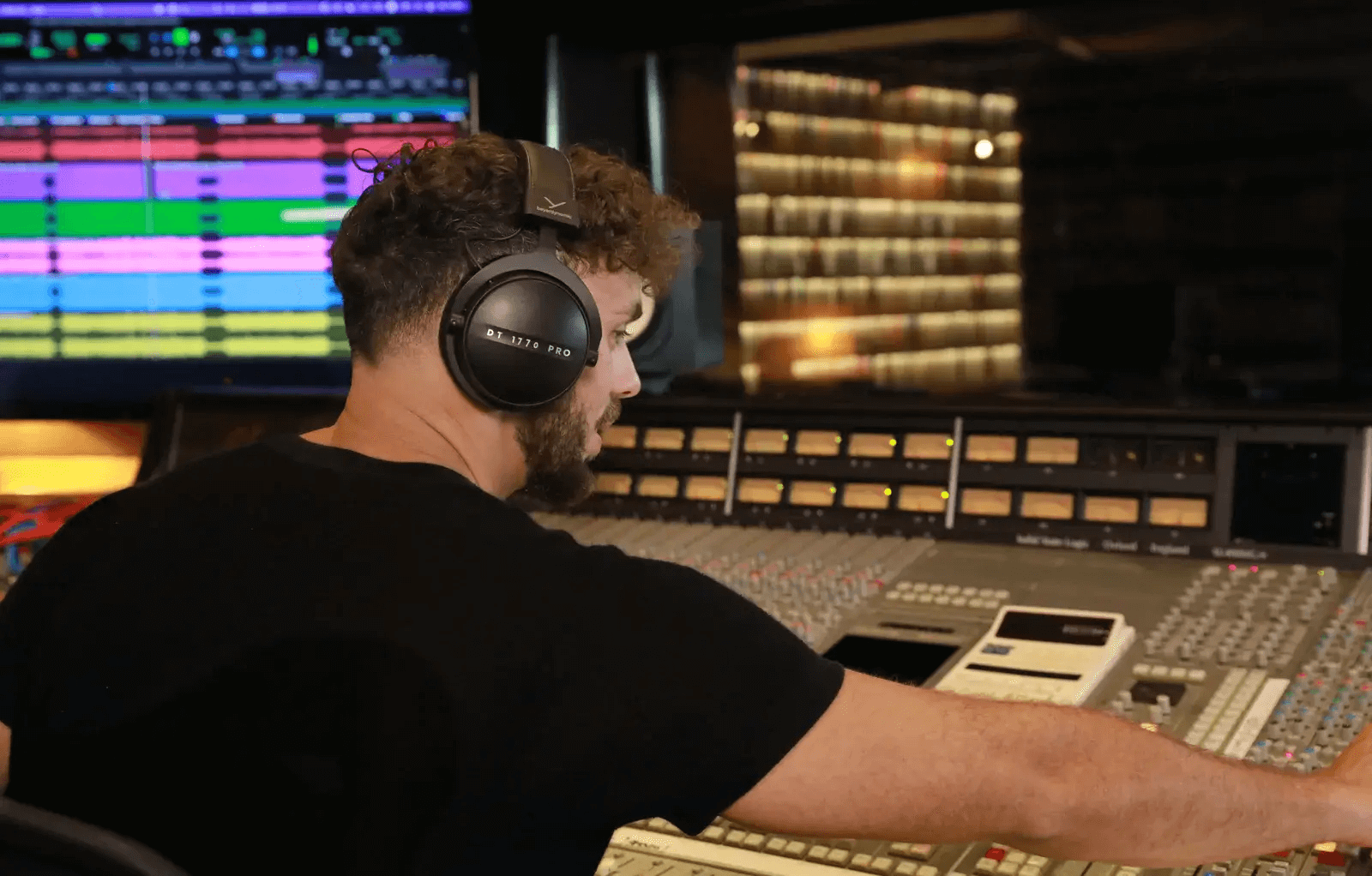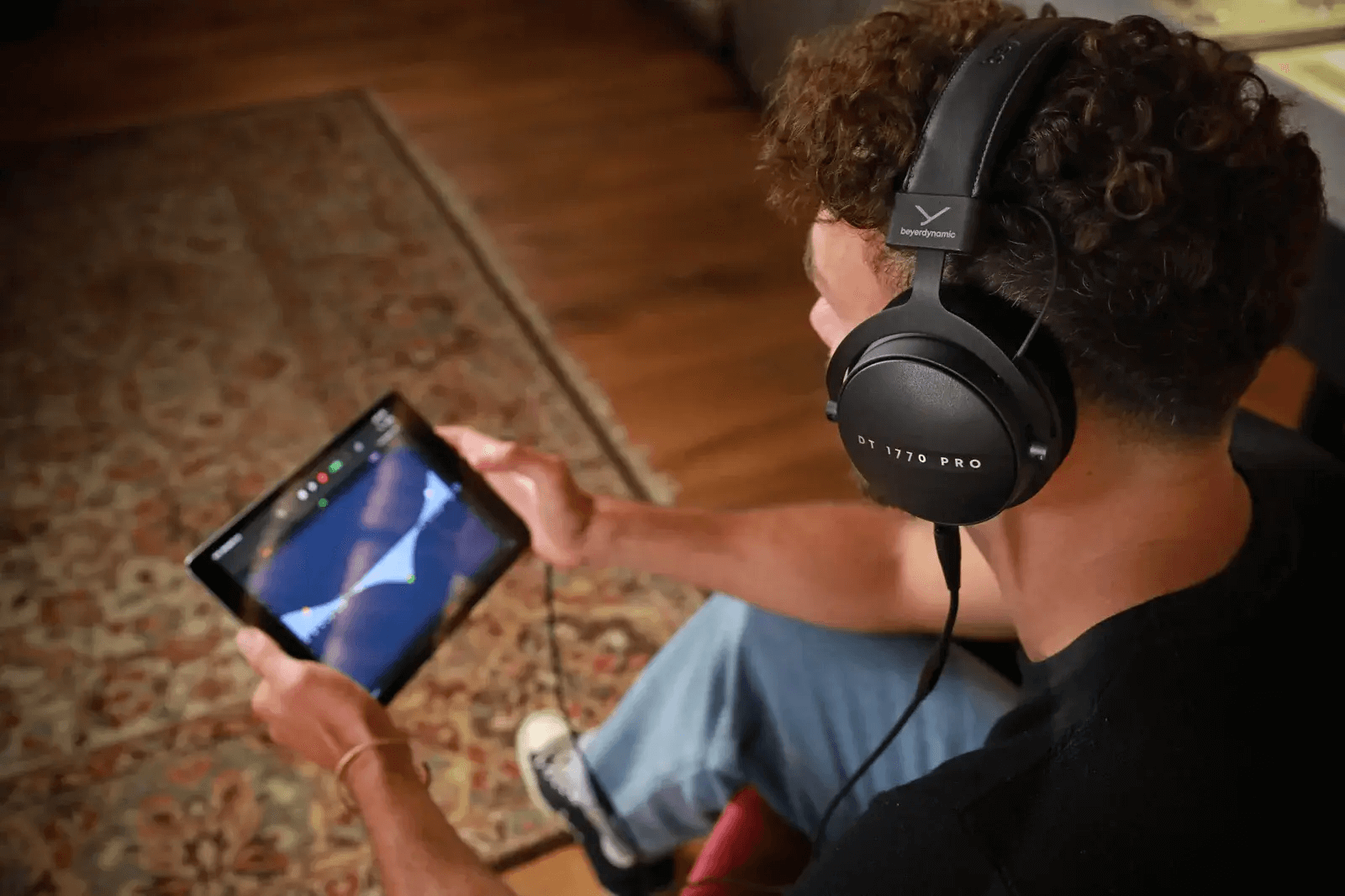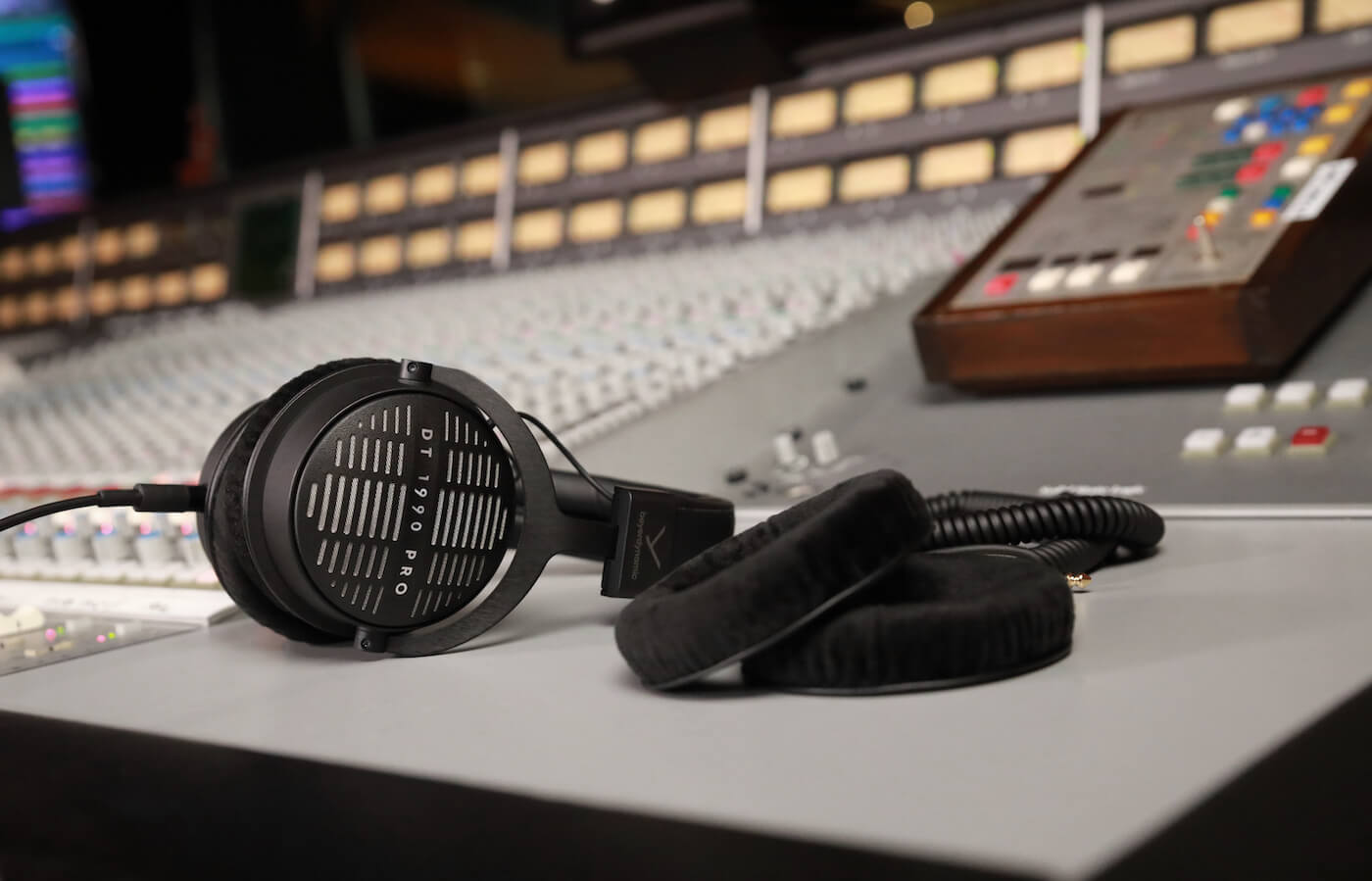Is there a perfect pair of headphones for mixing and mastering?

Recording: Beware of crosstalk!
There is a risk of crosstalk, especially when recording vocals. This means that the output of a headphone is so high that it is picked up by the microphone. This can cause noise or even phase problems. To counteract this, it is recommended to use closed headphones. Models of this type offer a high level of sound insulation, which both allows little external noise and emits little sound to the outside.
In addition, the frequency response should be relatively balanced so that sound engineers in particular can assess the sound during monitoring. In live situations and for singers and musicians, however, a slight boost in the lows can make it easier to assess and perceive the bass range.
The Beyerdynamic DT 1770 PRO MKII, for example, has a frequency response adapted for this purpose. Thanks to the improved TESLA.45 driver, the new model delivers powerful bass, but remains neutral and detailed in the mid and high frequency range - all with reduced distortion.
Wearing comfort and weight: not to be underestimated especially during longer sessions, the wearing comfort and weight of headphones can make the decisive difference. Heavy models or ear cups with high contact pressure can quickly lead to headaches.
The material of the headband and ear pads is also important. The headphones must fit well and be comfortable. Most professional models are padded with velour on the ear cups and synthetic leather on the headband. The pads can often be replaced, so you can try out different materials.
Editing: Keep it clean
Editing is about making timing corrections on the one hand, and cleaning up noises on the other. This can be lip noises in vocals or accidental string strikes when playing the guitar. Closed headphones are also recommended for this, as they isolate you from the outside world and allow you to concentrate fully on the production. However, open headphones can also be used in a quiet place.
References: Create a familiar sound image
As we all know, a craftsman is only as good as his tools. In our case, that means: know your headphones. The relevance of reference tracks is constantly preached. And that is right and important. Because even if a linear frequency response seems desirable, it is no guarantee of success.
First and foremost, it is important to find headphones that are as linear as possible, but also suit your own listening habits. In the second instance, you should study their frequency response and listen to reference tracks to identify and internalize strengths and weaknesses. If you have mastered these steps, you will also achieve good results without...
Room correction: Is it all just an illusion?
Opinions differ on the subject of room or frequency correction. Some are thrilled by it, others dismiss it as marketing. As is often the case, there is no general answer to this. Roughly speaking, our hearing impression is manipulated by the corresponding software - whether for better or worse can only be determined in a test.
Mixing and mastering: Analytical listening
Open headphones are particularly suitable for the most authentic, natural sound impression possible when mixing and mastering. They are more permeable than closed headphones, both in terms of noise absorption and emission as well as ventilation. Due to these properties, open headphones are particularly suitable for quiet environments such as sound control rooms. Due to the low sound insulation, their sound image appears more spatial, which benefits localization and depth layering when mixing. In addition, the high impulse fidelity of these headphones ensures detailed and accurate transient reproduction.
We recommend the Beyerdynamic DT 1990 PRO MKII for this purpose. Just like the closed DT 1770 PRO MKII, the model is equipped with the new TESLA.45 driver generation. The frequency response has been balanced again and subtly reduced in the highs compared to its predecessor, but this does not change the impulse fidelity.

For eternity
Another aspect that should not be underestimated is the availability of spare parts or repair options. If production of your favorite headphones ever stops, you can extend their lifespan considerably with spare parts - and you don‘t have to go for a new reference again.
The Beyerdynamic DT 1770 PRO MKII and the Beyerdynamic DT 1990 PRO MKII also score points here. Almost all components of these two models can be replaced, from the headband to the cable to the acoustic systems. This not only results in the longevity of these headphones, but also opens up individual customization options.
Verdict
Let‘s summarize everything again: When choosing headphones, comfort, weight and area of application play a key role. The headphones should be as light and comfortable to wear as possible, without, for example, putting too much pressure on the ears.
Closed headphones are particularly suitable for noisy environments such as recordings and live monitoring. The opposite is the case with open headphones. They are suitable for quiet environments and sound more spatial. They are therefore recommended for mixing and mastering.
But the following applies to all headphones: Study their frequency behavior and get to know them using reference tracks. Then you will always have a familiar monitor to hand, wherever you are. Repair/replacement options extend the service life of your favorite headphones, even if their production should be discontinued.
Recommendations
The Beyerdynamic DT 1770 PRO MKII & DT 1990 PRO MKII impress in all areas of music production thanks to advanced TESLA.45 drivers, adapted frequency response and exchangeable components. The latter even comes with a second pair of ear pads that sound a little more bass-heavy for producing. And thanks to their low impedance, both models work with any device.

Beyerdynamic DT 1770 PRO MKII specifications:
- Acoustic principle: closed
- Ear connection: circumaural
- Transducer principle: dynamic
- Transducer diameter: 45 mm
- Frequency response: 5 – 40,000 Hz
- Nominal impedance: 30 ohms
- Sound pressure level: 95 dB SPL (1 mW/500 Hz), 110 dB (1 V/500 Hz)
- Distortion factor (1 mW): 0.20% (100 Hz), 0,04% (500 Hz), 0.10% (1 kHz)
- Höchste Nennbelastbarkeit (Dauerbetrieb): 30 mW
- Isolation of external noise: 25 dBA
- Pressure force: 6 N (+/- 0.5)
- Weight (without cable): 377 g
- More info on the DT 1770 PRO MKII
Beyerdynamic DT 1990 PRO MKII specifications:
- Acoustic principle: open
- Ear connection: circumaural
- Transducer principle: dynamic
- Transducer diameter: 45 mm
- Frequency response: 5 – 40,000 Hz
- Nominal impedance: 30 ohms
- Sound pressure level: 94 dB SPL (1 mW/500 Hz), 110 dB (1 V/500 Hz)
- Distortion factor (1 mW): 0.20% (100 Hz), 0.06% (500 Hz), 0.08% (1 kHz)
- Maximum nominal load capacity (continuous operation): 30 mW
- Pressure force: 6 N (+/- 0.5)
- Weight (without cable): 376 g
- More info on the DT 1990 PRO MKII
Want more? Get more!



Subscribe to the digital edition of BEAT Magazine via Plugins-Samples.com and get more gear, in-depth workshops, reviews and 11 GB exclusive plugins and new sounds with every monthly issue!
Subscribe to Beat Magazine for only 4.99€ per month
